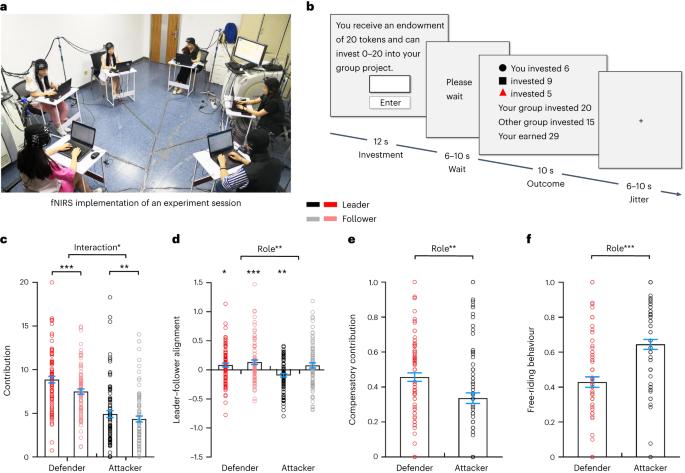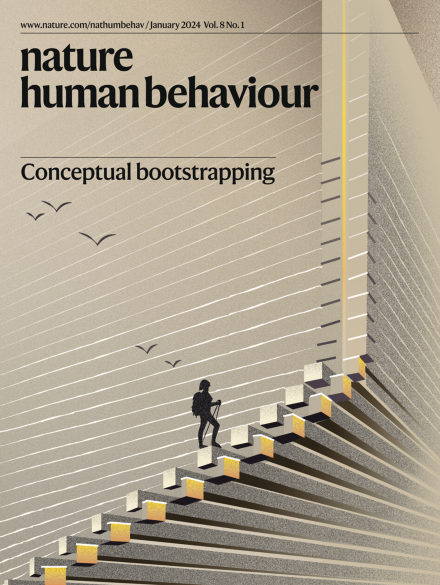群体间冲突中领导者与追随者的行为协调和神经同步。
IF 15.9
1区 心理学
Q1 MULTIDISCIPLINARY SCIENCES
引用次数: 0
摘要
领导者可以对外部群体发起敌对攻击,也可以组织内部群体进行防御。然而,群体能否以对自己有利的方式解决冲突,取决于追随者是否与领导者的举措保持一致。然而,在群体间冲突中,领导者和追随者如何协调仍是未知数。在测量背外侧前额叶皮层(DLPFC)活动的同时,小组参与者选出了一名领导者,并在群体间冲突中做出了代价高昂的贡献。与外群体攻击相比,领导者在群内防御时更有牺牲精神,他们的贡献对群体生存的影响更大。领导者在保卫本群体时的前额叶皮质活动也会增加,这预示着他们对冲突的贡献相对较大;追随者的前额叶皮质活动与领导者的活动越同步,他们对领导者举措的回报就越大。然而,在发起攻击时,领导者和追随者在行为和神经水平上的一致性很差,这就解释了为什么向外攻击往往会失败。我们的研究结果从神经行为学角度解释了群体间冲突中领导者与追随者之间的协调问题,并揭示了领导者与追随者在行为和神经层面上的协调是群体解决冲突的关键。本文章由计算机程序翻译,如有差异,请以英文原文为准。

Leader–follower behavioural coordination and neural synchronization during intergroup conflict
Leaders can launch hostile attacks on out-groups and organize in-group defence. Whether groups settle the conflict in their favour depends, however, on whether followers align with leader’s initiatives. Yet how leader and followers coordinate during intergroup conflict remains unknown. Participants in small groups elected a leader and made costly contributions to intergroup conflict while dorsolateral prefrontal cortex (DLPFC) activity was simultaneously measured. Leaders were more sacrificial and their contribution influenced group survival to a greater extent during in-group defence than during out-group attacks. Leaders also had increased DLPFC activity when defending in-group, which predicted their comparatively strong contribution to conflict; followers reciprocated their leader’s initiatives the more their DLPFC activity synchronized with that of their leader. When launching attacks, however, leaders and followers aligned poorly at behavioural and neural levels, which explained why out-group attacks often failed. Our results provide a neurobehavioural account of leader–follower coordination during intergroup conflict and reveal leader–follower behavioural/neural alignment as pivotal for groups settling conflicts in their favour. Applying functional near-infrared spectroscopy hyperscanning in intergroup conflict, the authors provide evidence that leaders and followers show behavioural synchronization, as well as neural synchronization in the prefrontal cortex.
求助全文
通过发布文献求助,成功后即可免费获取论文全文。
去求助
来源期刊

Nature Human Behaviour
Psychology-Social Psychology
CiteScore
36.80
自引率
1.00%
发文量
227
期刊介绍:
Nature Human Behaviour is a journal that focuses on publishing research of outstanding significance into any aspect of human behavior.The research can cover various areas such as psychological, biological, and social bases of human behavior.It also includes the study of origins, development, and disorders related to human behavior.The primary aim of the journal is to increase the visibility of research in the field and enhance its societal reach and impact.
 求助内容:
求助内容: 应助结果提醒方式:
应助结果提醒方式:


